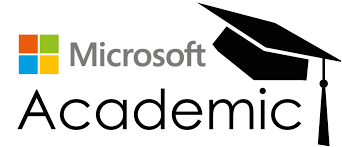BETWEEN FORMAL AND INFORMAL THINKING: THE USE OF ALGEBRA FOR SOLVING GEOMETRY PROBLEMS FROM THE PERSPECTIVE OF VAN HIELE THEORY
Abstract
This study investigated primary education master program students’ problem solving strategies and their for-mal and informal thinking ability when dealing with geometry problems that require the use of algebra in its solution processes. In order to do so, an explorative study through individual written test, observation, and field notes, involving 47 primary education master program students was carried out. The perspective of Van Hiele theory on the development of geometric thought was used to interpret student formal and informal thinking strategy when dealing with geometry problems. The results showed that more than half of the stu-dents used informal rather than formal algebraic strategies in solving geometry problems; when students used algebraic strategies, their work were imperfect as they still made mistakes in applying the strategies. In the light of Van Hiele theory, it can be concluded that students’ level of thinking are still in between formal and informal thinking when dealing with geometry problems.
ABSTRAK
Penelitian ini menyelidiki strategi pemecahan masalah mahasiswa program magister pendidikan dasar serta ke-mampuan berpikir formal dan informal mereka ketika menyelesaikan soal geometri yang memerlukan peng-gunaan aljabar dalam proses penyelesaiannya. Untuk mencapai tujuan ini, studi eksploratif melalui tes indi-vidu tertulis, observasi dan catatan lapangan dilakukan dengan melibatkan 47 mahasiswa program magister pendidikan dasar. Teori Van Hiele digunakan untuk menginterpretasi kemampuan berpikir formal dan infor-mal mahasiswa dalam menyelesaikan soal-soal geometri. Hasil penelitian menunjukkan bahwa lebih dari sepa-ruh mahasiswa menggunakan strategi-strategi informal ketimbang strategi-strategi aljabar formal dalam proses penyelesaian soal-soal geometri; ketika mahasiswa menggunakan strategi-strategi aljabar, proses penyelesaian yang mereka lakukan tidak sempurna dan masih melakukan kekeliruan-kekeliruan dalam menerapkan strategi tersebut. Berdasarkan tinjauan teori Van Hiele, dapat disimpulkan bahwa kemampuan berpikir mahasiswa ma-sih berada pada kemampuan antara formal dan informal ketika menyelesaikan soal-soal geometri.
How to cite: Jupri, A., & Syaodih, E. (2016). Between Formal and Informal Thinking: The Use of Algebra for Solving Geometry Problems from the Perspective of Van Hiele Theory, Jurnal Pengajaran MIPA, 21(2), 108-113.
Keywords
Full Text:
PDFReferences
Breyfogle, M. L., & Lynch, C. M. (2010). Van Hiele revisited. Mathematics Teaching in The Middle School, 16(4), 233–238.
Burger, W. F., & Shaughnessy, J. M. (1986). Characterizing the van Hiele levels of development in geometry. Journal for Research in Mathematics Education, 17(1), 31–48.
Clements, D. H. (1985). Perspective on “the child’s thought and geometry”. Classic in Mathematics Education Research, pp. 60, State University of New York at Buffalo.
Crowley, M. L. (1987). The Van Hiele model of the development of geometric thought. In Learning and Teaching Geometry, K-12, 1987 Yearbook of the National Council of Teachers of Mathematics, edited by M. M. Lindquist, pp. 1–16, Reston Va: National Council of Teachers of Mathematics.
De Lange, J. (1987). Mathematics insight and meaning. Dissertation. Utrecht, the Netherlands: OW & OC.
De Lange, J. (2006). Mathematical literacy for living from OECD-PISA perspective. Tsukuba Journal of Educational Study in Mathematics. Vol. 25. Special Issue on The APEC-TSUKUBA International Conference “Innovative Teaching Mathematics through Lesson Study” (pp. 13–15). Tokyo, Japan: University of Tsukuba.
Gutierrez, A., Jaime, A., & Fortuny, J. M. (1991). An alternative paradigm to evaluate the acquisition of the Van Hiele levels. Journal for Research in Mathematics Education, 22(3), 237–251.
Herskowitz, R. (1998). About reasoning in geometry. In C. Mammana, & V. Villani (Eds.), Perspective on the teaching of geometry for the 21st century (pp. 29–36). Dordrecht, Boston, London: Kluwer Academic Publishers.
Howse, T. D., & Howse, M. E. (2015). Linking the Van Hiele theory to instruction. Teaching Children Mathematics, 21 (5), 305–313.
Jupri, A., & Drijvers, P. (2016). Student difficulties in mathematizing word problems in algebra. Eurasia Journal of Mathematics, Science & Technology Education, 12 (9), 2481–2502.
Mammana, C., & Villani, V. (1998). Perspectives on the teaching of geometry for the 21st century: An ICMI study. Dordrect, Boston, London: Kluwer Academic Publishers.
Sanjaya, D., & Wijaya, S. (2007). Strategi penyelesaian soal-soal matematika yang mengasyikan untuk SD/MI dan SMP/MTS. Jakarta: Kandel.
Szetela, W., & Nicol, C. (1992). Evaluating problem solving in mathematics. Educational Leadership, 42–45.
Tampomas, H., & Saputra, R. H. (2006). Olimpiade matematika untuk Sekolah Dasar. Jakarta: Grasindo.
Teppo, A. (1991). Van Hiele levels of geometric thought revisited. The Mathematics Teacher, 84(3), 210–221.
Treffers, A. (1987). Three dimensions. A model of goal and theory description in mathematics instruction-The Wiskobas project. Dordrecht, the Netherlands: Kluwer Academic Publishers.
Van den Heuvel-Panhuizen, M. (2003). The didactical use of models in realistic mathematics education: An example from a longitudinal trajectory on percentage. Educational Studies in Mathematics, 54(1), 9–35.
Van Hiele, P. M. (1986). Structure and insight. Orlando, Fla: Academic Press.
Van Hiele, P. M. (1999). Developing geometric thinking through activities that begin with play. Teaching Children Mathematics, 6, 310–316.
Wiworo. (2004). Olimpiade Matematika dan IPA Sekolah Dasar/Madrasah Ibtidaiyah. Makalah yang disampaikan dalam Diklat Instruktur/Pengembang Matematika SD Jenjang lanjut di PPPG Matematika, 6–19 Agustus 2004.
DOI: https://doi.org/10.18269/jpmipa.v21i2.44254
Refbacks
- There are currently no refbacks.
Copyright (c) 2022 Jurnal Pengajaran MIPA

This work is licensed under a Creative Commons Attribution-ShareAlike 4.0 International License.
JPMIPA http://ejournal.upi.edu/index.php/jpmipa/index is licensed under a Creative Commons Attribution-ShareAlike 4.0 International License
Jurnal Pengajaran Matematika dan Ilmu Pengetahuan Alam (JPMIPA) or Journal of Mathematics and Science Teaching
All rights reserverd. pISSN 1412-0917 eISSN 2443-3616
Copyright © Faculty of Mathematics and Science Education (FPMIPA) Universitas Pendidikan Indonesia (UPI)
View JPMIPA Stats









